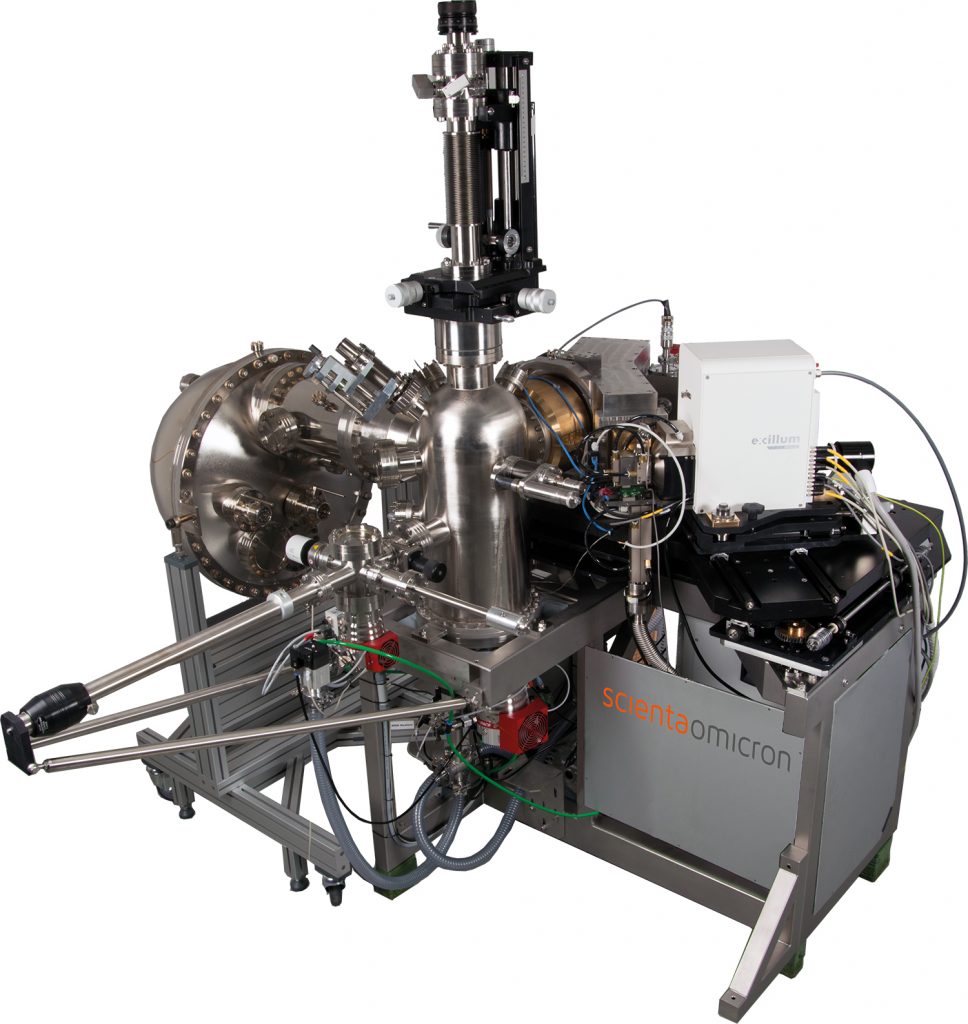Binghamton University is gaining a new piece of equipment for research, and the machine will mark the first of its kind in the United States and third in the world.
On Wednesday, Louis Piper, director of the Institute for Materials Research and an associate professor of physics, was awarded a $1.23 million grant from the National Science Foundation’s (NSF) Major Research Instrumentation Program to purchase a Hard X-ray Photoelectron Spectroscopy (HAXPES) instrument, called HAXPES-Lab.
HAXPES is a method researchers use to measure the contents of various materials and electronics without having to disassemble them. According to Matthew Wahila, a postdoctoral research assistant in physics under Piper, a major benefit of the method is the ability to measure batteries and other electronics while they are functioning.
“We have theories, and we have a good idea of what’s happening [inside a working battery], but actually measuring something while it is working is very difficult,” Wahila said. “It’s like trying to look inside your car engine while your car is driving down the highway.”
The HAXPES method is typically done at a synchrotron particle accelerator facility, in an area larger than a football field. BU researchers, according to Wahila, have traveled as far as the United Kingdom to use these synchrotrons for less than a week at a time. With the new HAXPES-Lab instrument, the same method can be performed inside a standard BU lab at any time of day.
“It’s much easier to have a lab setting to work with customizing and optimizing the device than organizing it with proposals to access the synchrotron facility,” Piper said. “You might only get 12 hours to do your experiment, then you have to wait six months later … There’s a lot of logistics that make it impractical.”
The University is purchasing the instrument for $1.75 million from Scienta Omicron, a Germany-based company that provides surface science technology for the research community, according to their official website. The NSF grant covers most of the total cost, but the University will still pay about $528,000 for the machine.
According to Piper, the grant stipulated that upon approval, BU would be required to pay 30 percent of the total cost to show the instrument will be useful and worthwhile. Piper and Wahila plan to use the HAXPES-Lab to take a further look into batteries, assisting M. Stanley Whittingham, a distinguished professor of chemistry and materials science and engineering, with his research on lithium-ion batteries.
Scienta Omicron put the HAXPES-Lab on the market about two years ago, according to Fred Henn, a sales manager at Scienta Omicron, and has sold the other two instruments to universities in the United Kingdom and Belgium. Henn said having BU as the first purchase in the United States could lead to more HAXPES-Lab sales.
“Our plan is to use Binghamton as a showcase site to be able to bring people in to show them the instrument … to further promote it,” Henn said. “We’re very excited that Binghamton will be the first of what we hope to be a number to come.”
As part of the application for the NSF grant, Piper said he had to prove that the instrument would also attract collaborative work from other universities and private companies. He submitted 40 groups who showed interest in paying to work with BU’s HAXPES-Lab. Wahila said he is looking forward to the collaboration and research potential of having the instrument on campus.
“One thing that is going to be cool about this system is that it is going to be a user facility and not just going to be for our research,” Wahila said. “Other research groups from across the country will make use of the equipment, and hopefully help make Binghamton University more of a research hub.”



